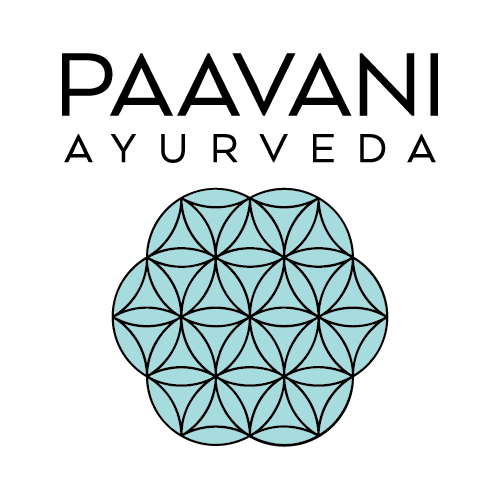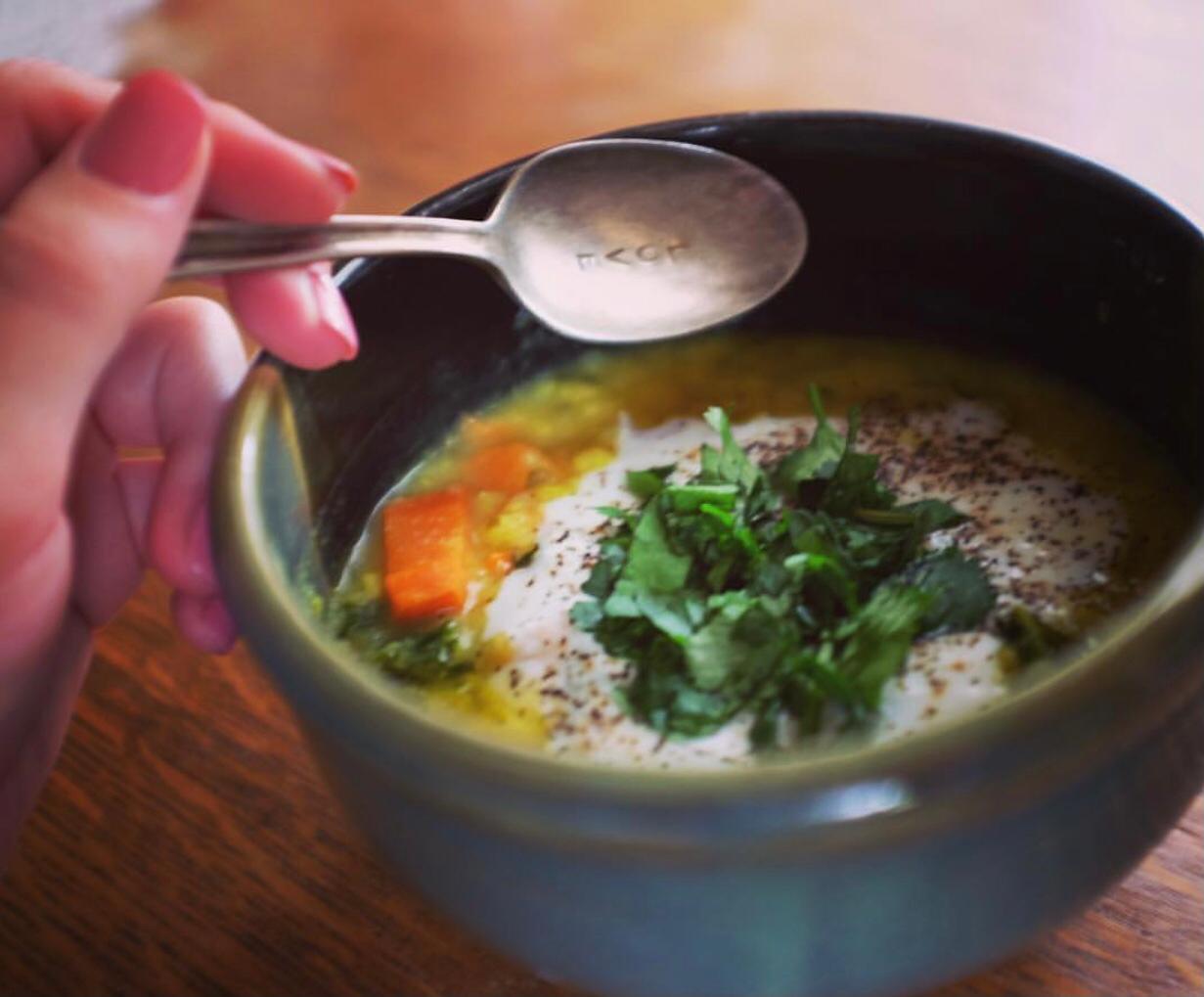
Triple Gingersnaps: An Ayurvedic Holiday Cookie Recipe
During the holidays, we like to give ourselves a little leeway and indulge in a cookie or two...okay, maybe three. For many, the ritual of baking holiday cookies is a time honored tradition, with recipes handed down from generation to generation. Family favorites like sugar cookies, snickerdoodles and peppermint meringues may be on your baking list; however, maybe it’s time to introduce your family to an Ayurvedically inspired cookie that tastes delicious and also keeps you feeling healthy and balanced.
An Ayurvedic cookie differs from your typical cookie because it does not rely on white, refined cane sugar for its sweetness. Instead, Ayurvedic cookies commonly opt for minimally processed, natural sweeteners like maple syrup, sucanat, jaggery or black strap molasses. According to Ayurveda, unlike white sugar, these sugar substitutes digest more slowly and provide trace nutrients that may help protect our teeth from decay. They are also considered to have a more sattvic or harmonious energy versus the rajasic and tamasic nature of refined sugar that, when consumed in excess, can eventually lead to discontent, lethargy and dullness. As an aside, you might be wondering why honey does not make this list of natural sweeteners? Ayurveda loves raw honey but teaches to never cook or bake with it because high heat creates toxins within the honey, known as madhu ama, and this ama is very difficult to remove from the body.
Let us take a look at the sugar alternatives that Ayurveda does recommend for baking:
- Maple Syrup: This syrup is the sap, or the literal life force, of maple trees. As it nourishes maple trees with its vitamins and minerals, it too can nourish our bodies. Maple syrup is considered cool, light and moist in Ayurveda, making it best for calming vata and pitta dosha. Yet, due to its cool and moist properties, it can imbalance kapha dosha.
- Sucanat: An easy substitute for white sugar, sucanat is raw or unrefined cane sugar. It is rich in flavor, contains natural minerals and looks similar to brown sugar. It is considered cool and moist, making it an appropriate choice for vata and pitta doshas, it moderately aggravates kapha dosha.
- Jaggery: This unrefined sugar is raw, concentrated cane juice produced in Asia and Africa. Jaggery is sometimes called a “non-centrifugal sugar” since, when made, it is not spun to remove its molasses. To make jaggery, one must boil down the sugar cane until it is reduced to a thick brown paste. It then sets in a mold to harden; thus, when you buy jaggery it should be in a dense block shape. It has nutritional value thanks to its amount of iron and mineral content. People describe jaggery as earthy and caramel like. It is an ideal sweetener for vata dosha and is even used in Ayurveda to aid in digestion, flush out toxins and build ojas or immunity.
- Molasses: A dark, thick and gooey syrup, molasses is a by-product of the sugar making process. In Ayurveda, it is considered heavy, warm and sweet, making it perfect for restoring vata dosha. Yet, due to its heat, it can upset pitta dosha, while its heavy quality can imbalance kapha dosha. It is indicated to reduce anxiety and muscle tension as well as stoke agni or digestion. Ayurveda also recognizes that molasses strengthens the rakta dhatu or the blood thanks to its high iron content. When shopping for molasses, be sure you select unsulphured inthe light or dark variety. Unsulphured molasses is ideal because sulfur dioxide has not been added to preserve freshness, like it has in sulphured molasses. The light or dark variety is preferred in baking as its flavor is not as overpowering as blackstrap molasses. Despite this fact, I have made the below recipe with unsulphured blackstrap molasses and still enjoyed the cookies’ taste and flavor.
Another key difference in Ayurvedic baking versus your average baking is that dipanas, or digestive herbs are a must! Spices like ginger, cardamom, cinnamon and clove help to aid in the healthy digestion of foods and these particular spices pair very well with cookies because they help counterbalance cookies’ heavy and sweet qualities. The recipe below, Triple Gingersnaps, is inspired by Ayurvedic chef, Amadea Morningstar. We dialed up the amount of ginger because we love its warm, rich flavor and also because of its ability to enhance agni. Not to mention, as Dr. David Frawley states, “ginger is perhaps the best and most sattvic of all the spices...and is considered the ‘universal medicine’.” Thus, the added dose of ginger in these cookies, combined with the maple syrup, molasses and other herbal ingredients will have you feeling blissful and content, with a bellyful of goodness.
The sweet taste in the form of homemade or thoughtfully made cookies, cakes, fruits and breads are a wonderful way to celebrate this festive time of year. One should not feel guilty when enjoying the nourishing and grounding properties of sweets, but rather become aware of what type of sweets they are consuming. The sweet taste should also be savored sparingly with mindful awareness in order for it to not overwhelm our bodies and minds. We hope you enjoy our favorite Ayurvedic holiday cookie recipe that has the perfect amount of sugar and spice and all things healthy and nice to surely get you and your family in the holiday spirit!

TRIPLE GINGERSNAPS
vata balancing - pitta and kapha aggravating if consumed in excess -
Ingredients:
½ cup ghee or coconut oil
½ cup dark, unsulphured molasses
¼ cup maple syrup
1 egg, beaten
2 teaspoons dry ginger powder1
½ minced fresh ginger
1 teaspoon PAAVANI Golden Milk
1 cup rice flour
1½ cups oat flour/whole wheat flour/gluten-free baking flour
2 teaspoons baking powder
½ teaspoon sea salt
Directions:
Preheat the oven to 350 degrees Fahrenheit and lightly grease a cookie sheet or line with parchment paper.
Blend the ghee (or coconut oil), molasses, maple syrup and egg together in a large bowl. Proceed with adding the ginger powder, minced fresh ginger and Golden Milk to the wet mixture, blend all together. In a separate, medium-sized bowl, mix together the flours, baking powder and sea salt. Once thoroughly mixed, add the dry ingredients into the wet ingredients. When well blended together, spoon a tablespoon at a time onto the greased or parchment-lined baking sheet. Gently press the cookies to flatten them slightly if you like a thinner cookie or leave them as is for a thicker, smaller cookie. Cook for 10-15 minutes or until golden brown around the edges. Allow the ginger snaps to cool slightly before moving them onto a plate.

Pair these Ayurvedic Favorites With Your Triple Gingersnap Cookies
Works Cited:
Amadea Morningstar: The Ayurvedic Cookbook.
Dr. David Frawley. The Yoga of Herbs.
Jasmine Hemsley:
https://www.jasminehemsley.com/food-blog/2018/11/6/all-about-jaggery.
Joyfull Belly:
https://www.joyfulbelly.com/Ayurveda/ingredients/type/Sweeteners.
Lisa Cohen Ayurveda:
http://blog.lisacohenayurveda.com/2016/01/evaluating-different-sweeteners.html.
Maharishi Ayurveda:
https://www.mapi.com/blog/honey.html
Three Seasons Ayurveda:
https://www.threeseasonsayurveda.com/post/the-sweet-taste.
24 Mantra Organic:





2 comments
@TRAISHA Thank you so much for letting us know you are loving this recipe. How cool that your granddaughter loves these Ayurvedic approved cookies. :) Mahalo!
PAAVANI Ayurveda
These are great. I’m making my fourth batch in 2 weeks!! They’re our picky 2 yr old grandaughers fav!!
Mahalo!
Traisha
Leave a comment
This site is protected by hCaptcha and the hCaptcha Privacy Policy and Terms of Service apply.